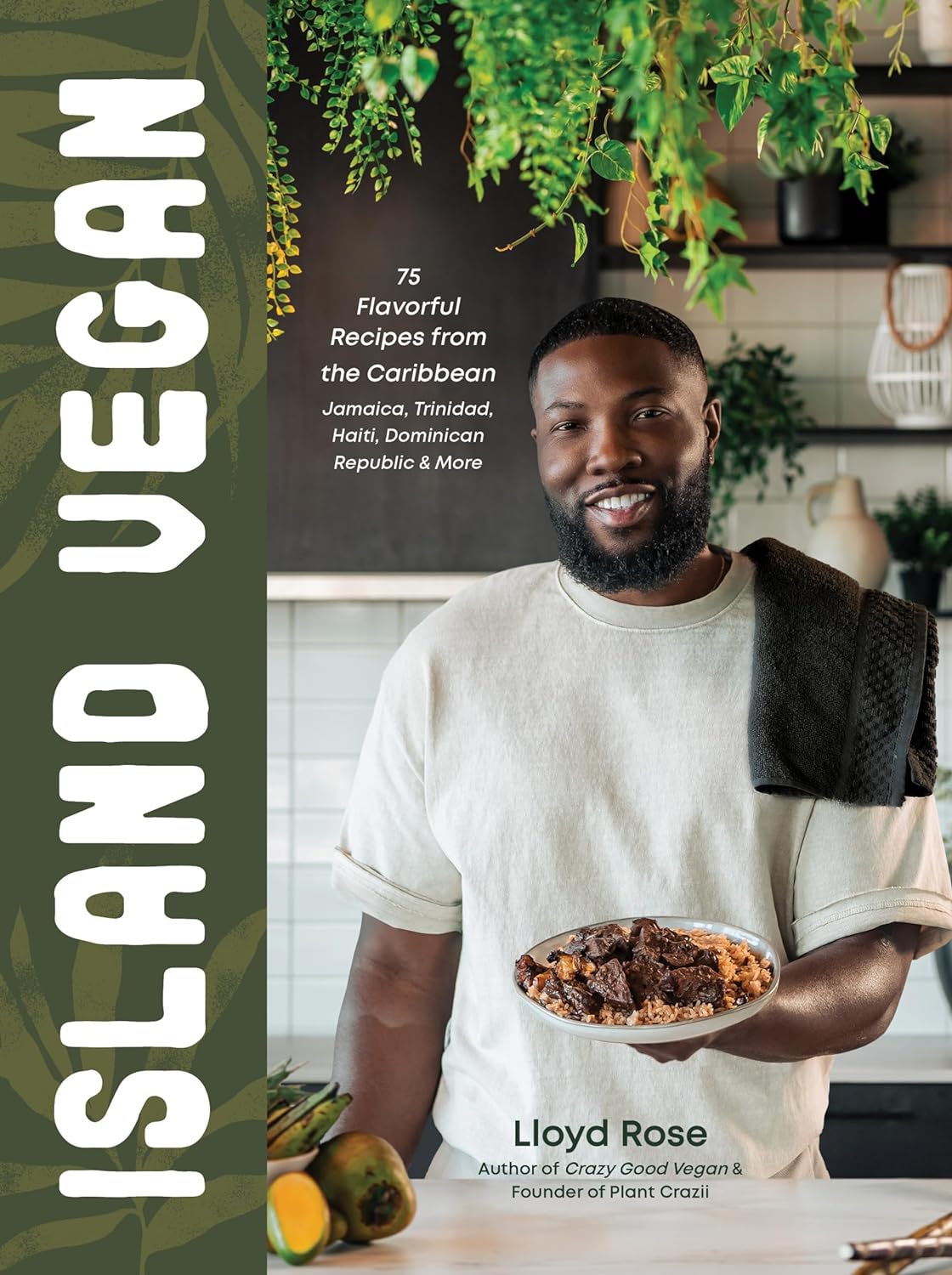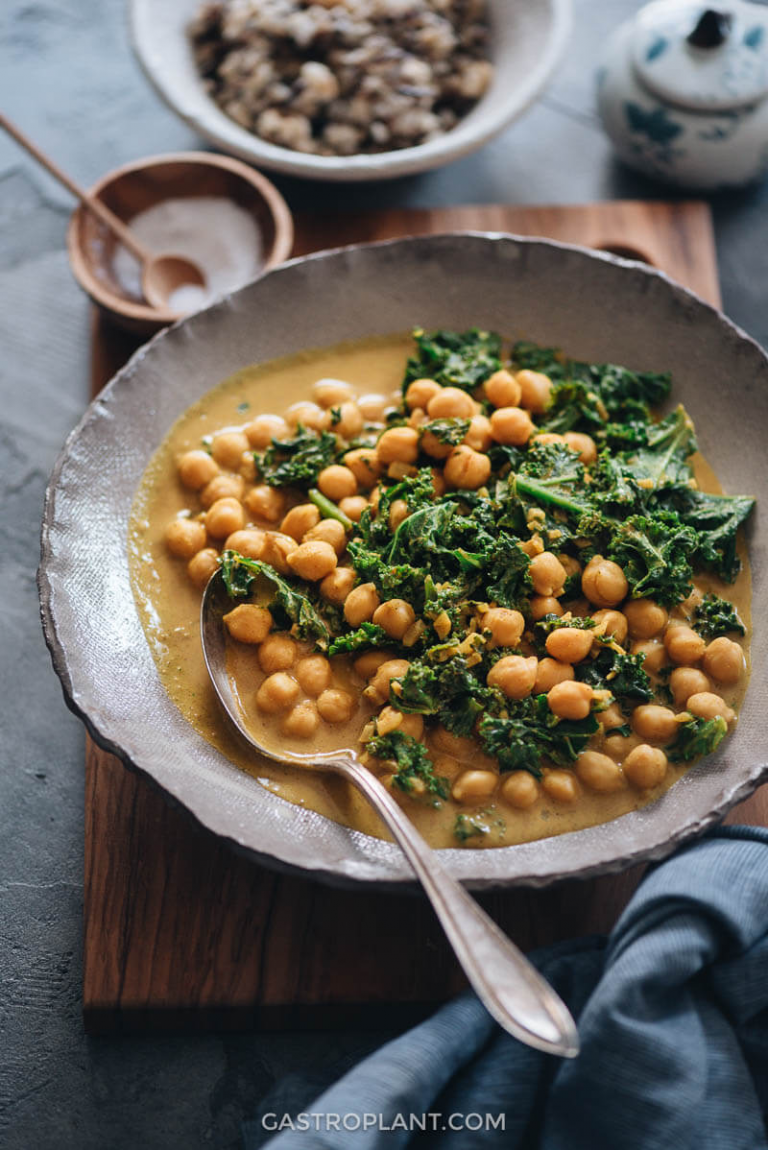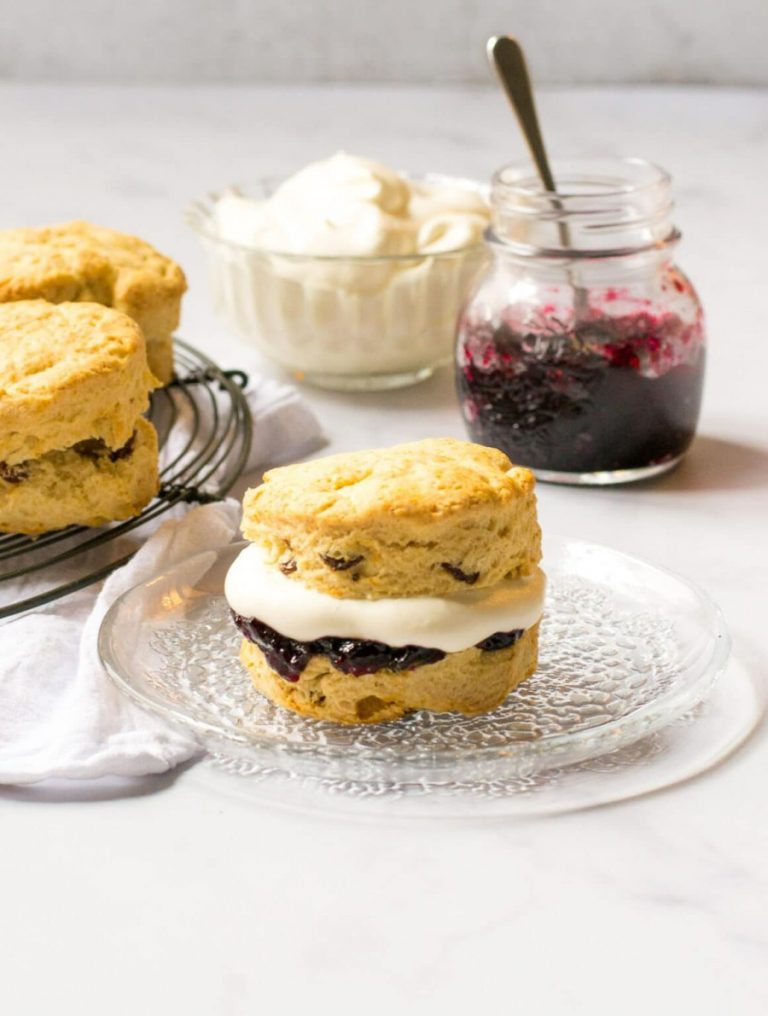
The Caribbean islands are just south of the USA and east of Central America. There are small islands and larger ones, the best-known being Jamaica, Barbados, the Bahamas and Cuba.
Known for clear blue seas, white sand and sunny weather (though there are a lot of hurricanes), the food is fusion, due to influences from different cultures (Africa, Europe and Asia).
Don’t eat cooked rice after 24 hours, nor fresh ackee (it can kill you!) Before cooking, read up on food safety for people and pets (many ingredients like onion, garlic and mushrooms are unsafe near animal friends).
Caribbean cooking uses a lot of garlic and onions. Like citrus fruits and rhubarbs, just bin allium scraps (garlic, onion, shallots, chives, leeks), as acids could harm compost creatures.
Island Vegan is a unique book of recipes by a chef who lives in Montreal, whose trips to Jamaica to see his family influence the recipes:
- Jamaican Beefy Patties
- Beefy Tacos
- The Grand Rasta Pasta!
- Sunny-roasted Cauliflower
- Jamaican Noxtail!
- Island Gravy with Veggie Chunks
- Trinidad Tomato Choka
- Salt Phish!
- Cornmeal Porridge
- Callaloo Omelette
- Sweet Caramel Custard
Improve Health with Caribbean Meals

Plant-forward Caribbean dishes load your plate with vitamins, fibre, and antioxidants. Ingredients like ackee, callaloo, okra, breadfruit, and cho cho deliver a mix of nutrients. Tropical fruits such as guava, papaya, mango, and soursop add vitamin C, carotenoids, and polyphenols that support skin, heart, and immune health.
A typical spread balances staples and greens. Think rice and peas cooked with kidney beans and coconut milk, then topped with steamed callaloo and a side of roasted plantain. Add grilled jerk tofu for protein without saturated fat. Lentils work well in rice and peas, giving a complete source of amino acids when paired with grains. Split peas lend body to soups without the need for cream.
A plant-based pattern can improve heart markers. Research shows that vegan diets often reduce LDL cholesterol by around 10 to 15 percent, which supports lower heart disease risk. Fibre from beans, yams, and whole grains binds cholesterol and feeds the gut microbiome. Better gut health often means better digestion, less bloating, and steadier energy.
Small swaps make a clear difference:
- Coconut milk: Adds creaminess to stews and curries instead of dairy.
- Tofu or tempeh: Takes on jerk marinade and grills to a crisp edge.
- Breadfruit: Roasted or boiled, it offers complex carbs and fibre for lasting fullness.
Antioxidant-rich herbs and spices boost the benefits. Scotch bonnet brings heat and capsaicin. Thyme, pimento, cinnamon, and nutmeg add anti-inflammatory compounds. When combined with a rainbow of produce, the plate is both protective and satisfying.
Boost Energy and Support Weight Management
High-fibre vegetables, beans, and whole grains release energy slowly. Vegan roti filled with curried chickpeas keeps you full and steady, rather than spiking blood sugar. Brown rice, quinoa, and ground provisions like cassava and sweet potato deliver complex carbs for active days.
Caribbean-style portions often highlight sides like ripe or green plantain, callaloo, and cabbage. These crowd the plate with volume and fibre, which helps with weight goals. Start simple: choose brown rice for your rice and peas, grill plantain instead of frying, and add a big salad dressed with lime.
Strengthen Immunity with Fresh, Local Ingredients
Ginger, turmeric, garlic, thyme, and citrus feature in many Jamaican and Trinidadian recipes. They carry compounds linked with anti-inflammatory and antimicrobial effects. Fresh lime or sour orange adds vitamin C, while turmeric pairs with black pepper to aid absorption.
Try a quick immune-friendly idea. Simmer pumpkin, carrots, and cho cho in coconut milk with turmeric, ginger, thyme, and a pinch of allspice, then blend for a golden soup. Using seasonal produce from local markets means higher freshness and often better flavour, which makes it easier to eat well day after day.
Help the Environment by Choosing Plants
Plant-based versions of Caribbean favourites can shrink your kitchen’s carbon footprint. Beans, lentils, and pulses need fewer resources to produce than meat and fish. When you base meals on legumes, roots, and fruit, you support a food system that uses less land and water. Local produce, in season, also cuts transport emissions compared with imported items.
Many islands promote sustainable agriculture. Breadfruit projects, home gardens, and community farms support biodiversity and soil health. Coconut, mango, callaloo, and cassava thrive in mixed plantings that shelter wildlife. Choosing these foods shows support for farms that protect local habitats.
Swapping meat does not mean losing taste. Bean-based patties instead of fish patties, or jackfruit rundown instead of salted meat, can match the spice and texture you want. Less demand for animal products can ease pressure on overfished waters and land set aside for feed. Your weekly menu becomes a quiet vote for cleaner air and water.
Water use also matters. Legumes usually require far less water per gram of protein than beef. That helps in regions where fresh water is precious. Cooking with what grows well in tropical climates respects local limits and builds resilience in food supply.
Reduce Your Carbon Footprint with Simple Swaps
Small choices add up. Curried chickpeas instead of goat curry, tofu stew instead of oxtail, or callaloo fritters instead of fish cakes. These dishes often cook faster, so you use less energy at the hob.
Support island sustainability efforts where you live. Buy from farmers’ markets, choose seasonal fruit, and reduce food waste by planning leftovers. Grow easy herbs like thyme, scotch bonnet, and spring onions on a windowsill to cut packaging and transport.
Preserve Caribbean Ecosystems Through Mindful Eating
Coral reefs and coastal forests face pressure from climate change, overfishing, and land use. Cutting back on animal products eases some of that strain. More plant-based meals mean fewer resources taken from fragile waters and forests.
Eco-friendly cooking is part of cultural pride. Many Caribbean families already cook with what is on hand, stretching beans, roots, and greens into meals that feed many. Share community recipes for ital stews, callaloo soup, and green banana salad. Over time, these habits help protect reefs, hillsides, and mangroves that shelter life and livelihoods.
Savour Authentic Tastes and Culture
Vegan Caribbean food keeps the soul of the cuisine alive. The magic lies in the seasoning, not only the protein. Scotch bonnet, thyme, pimento, ginger, garlic, and fresh herbs create layers that cling to tofu, mushrooms, jackfruit, and beans. Coconut milk softens the heat, while lime lifts each bite.
Adaptations can be faithful and fun. Jackfruit stands in for beef in pepperpot, taking on cinnamon, clove, and cassareep-style flavours. Mushroom escovitch offers the same tangy finish as fish, with onions, carrots, and peppers in a bright vinegar sauce. Callaloo with pumpkin builds a silk-smooth base that pairs well with quinoa or rice.
Vegan dishes also make gatherings inclusive. At a family cookout, curry chickpeas, grilled jerk tofu, and roasted breadfruit sit well beside traditional plates. No one misses out. The table becomes a meeting place where taste and values align.
Cooking at home invites creativity. Mix mango with black beans for a salsa, toss in chopped coriander, and serve with baked plantain. Marinate tofu in soy, lime, allspice, and a touch of molasses, then grill until charred. Finish with a cool cucumber and coconut yoghurt chutney. The process is joyful, the results generous.
Experience Bold Flavours Without Sacrificing Tradition
Allspice gives warmth and depth, thyme brings earthiness, and scotch bonnet adds a fruity heat. When these meet coconut, lime, and ginger, plant-based dishes feel rich and complete. You gain a larger canvas to experiment, since mushrooms, aubergine, and jackfruit each absorb marinades in their own way.
Build flavour in layers. Toast your spices, brown your aromatics, and rest the dish before serving. The fragrance tells you when it is ready. Close your eyes, taste, and adjust salt, acid, and heat until it sings.
Build Community and Share Vegan Caribbean Meals
Food traditions grow when they are shared. Host a potluck where each person brings a plant-based island dish. Try lentil patties, callaloo and cornmeal pie, or coconut rundown with okra. Swap tips, compare spice levels, and trade leftovers.
Health gains spread when groups eat better together. Friends try new vegetables, families eat more fibre, and children learn to love flavours beyond the familiar. Festivals and street markets now often feature vegan stalls, which helps people see how wide and welcoming this style can be.





